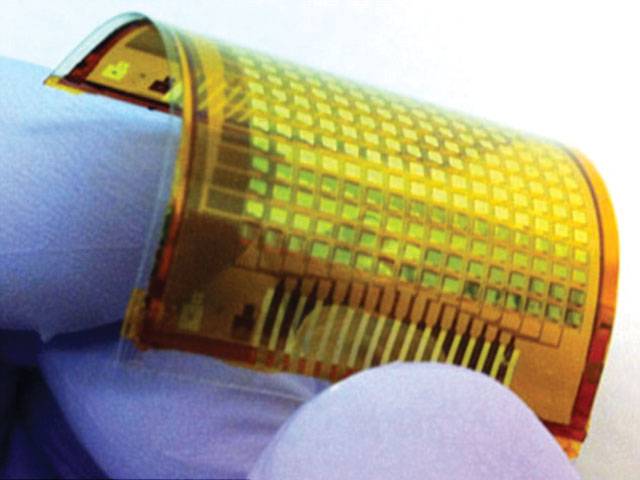CALIFORNIA
ML
Scientists have created what’s been dubbed the world’s first interactive ‘electronic skin’ that responds to touch and pressure.
When the flexible skin is touched, bent or pressed, built-in LEDs light up - and the stronger the pressure, the brighter the light.
The researchers, from the University of California, claim the bendy e-skin could be used to restore feeling for people with prosthetic limbs, in smartphone displays, car dashboards or used to give robots a sense of touch.
The skin was created by Ali Javey, a professor of electrical engineering and computer sciences at the Berkeley campus of the university.
It was built from a layer of polymer, or plastic, thinner than a piece of paper, melted onto the top of a strip of silicon.
Once the plastic had hardened, flexible electronic circuits were layered onto the skin. The plastic was then peeled from the silicon to create the flexible film with the sensors and semiconductors inside.
Samples of the e-skin are 16 x 16 pixels and each pixel contains a transistors made from semiconductor carbon nanotubes, an organic light emitting diode (OLED), and a pressure sensor.
In 2010, Javey’s team created a network of pressure sensors made from nanowires fitted to a large sheet of polymer.
When Javey touched this sheet of plastic, an electronic readout of the amount of pressure applied was fed into a computer. The researchers hoped the e-skin could be used to restore a sense of touch to patients with prosthetic limbs, for example.
Tuesday, April 16, 2024
Electronic skin that feels!

CM Maryam seeks comprehensive development plan for Murree
April 16, 2024
Court remands XEN in FIA custody
April 16, 2024
PML-N believes in ensuring prosperity, says Azma Bukhari
April 16, 2024
Political Reconciliation
April 16, 2024
Pricing Pressures
April 16, 2024
Western Hypocrisy
April 16, 2024
Policing Reforms
April 15, 2024
Storm Safety
April 15, 2024
Democratic harmony
April 16, 2024
Digital dilemma
April 16, 2024
Classroom crisis
April 16, 2024
Bridging gaps
April 16, 2024
Suicide awareness
April 15, 2024
ePaper - Nawaiwaqt
Advertisement
Nawaiwaqt Group | Copyright © 2024





